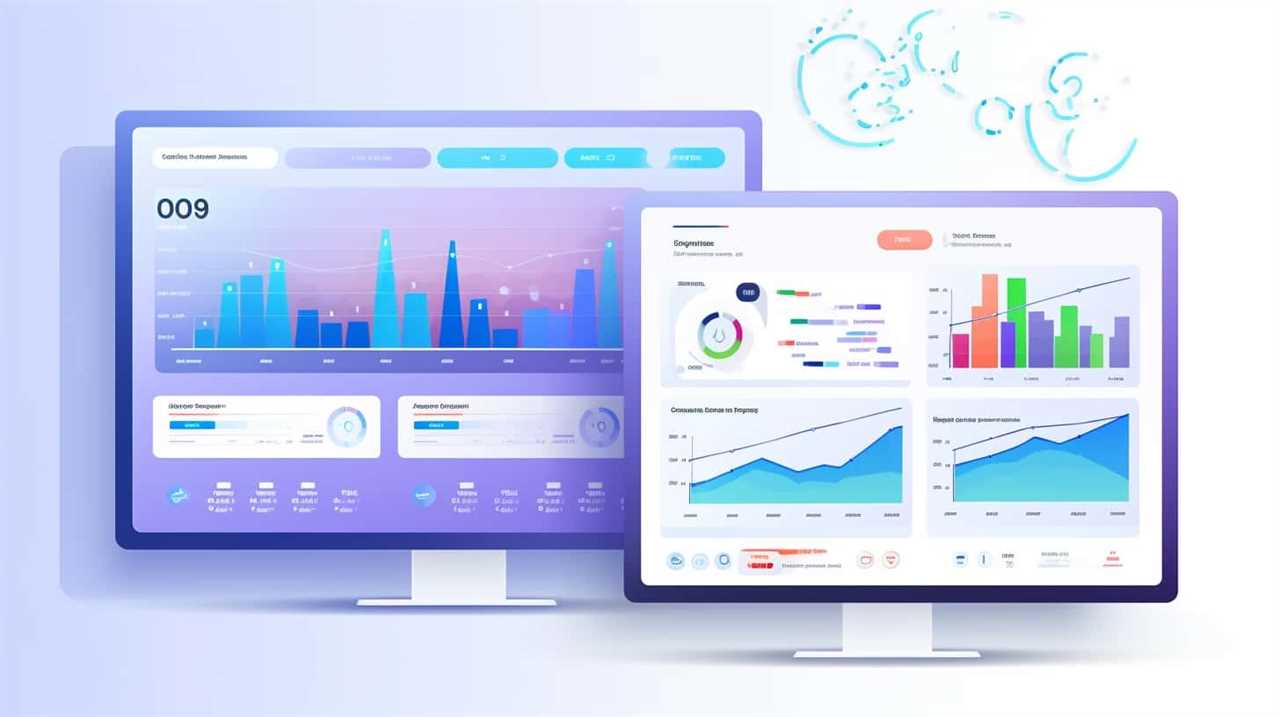Seeking to enhance your expertise in a specific area with the most recent information? Below are 10 suggestions that thoroughly prepare you for this purpose.
- Set a consistent content schedule
- Research trending topics
- Refresh old content
Add new information, incorporate targeted keywords, and implement internal linking strategies.
- Reach out to influencers
- Engage with your audience through comments and social media
Monitor performance metrics for continuous improvement.
With these techniques, you’ll be on your way to increasing your authority and gaining liberation in your field.

Key Takeaways
- Setting a consistent content schedule helps increase topical authority.
- Thorough research helps capture audience attention and solidify trust.
- Regularly updating old content maintains relevancy and improves SEO.
- Incorporating targeted keywords enhances the topical authority of content.
Set a Consistent Content Schedule
We should always strive to set a consistent content schedule to increase our topical authority with updates. Content consistency is crucial in establishing ourselves as reliable sources of information. By regularly publishing high-quality content, we not only provide value to our audience but also demonstrate our expertise in the field.
It’s important to create a content calendar that outlines the topics, formats, and publishing dates to ensure a consistent schedule. This allows us to plan our content creation process, allocate resources effectively, and maintain a steady flow of information for our audience.
Additionally, setting a consistent content schedule enables us to establish a rhythm for content promotion. By consistently sharing and promoting our content across various channels, we can reach a wider audience and increase our visibility, ultimately building our topical authority.
Research and Identify Trending Topics
To effectively increase our topical authority with updates, it is essential to conduct thorough research and identify trending topics. By staying up-to-date with what’s popular and capturing the attention of our audience, we can solidify our position as a trusted source of information. One way to achieve this is by identifying popular trends and researching viral topics that resonate with our target audience. This allows us to create content that is timely, relevant, and engaging. To provide a visual representation of our ideas, we can use a table like the one below:

| Trending Topics | Research Sources |
|---|---|
| Social media | Trending hashtags, popular accounts |
| Current events | News websites, industry blogs |
| Seasonal themes | Google Trends, social media conversations |
Update and Refresh Old Content Regularly
To maintain our position as a trusted source of information and increase our topical authority with updates, it’s crucial that we regularly update and refresh old content. By doing so, we not only keep our content relevant and up-to-date but also improve our SEO strategies.
Here are four key reasons why refreshing old content is essential:
- Improved Search Engine Rankings: Updating old content with new information and optimizing it for relevant keywords can help boost our search engine rankings and increase organic traffic to our website.
- Enhanced User Experience: Refreshing old content allows us to provide our audience with the most accurate and valuable information. This, in turn, improves their overall experience on our website and encourages them to stay longer, engage more, and keep coming back for more.
- Expanded Content Reach: By updating and repurposing old content, we can reach new audiences and attract more visitors to our website. This can be done by sharing the updated content on social media platforms, reaching out to influencers, or collaborating with other industry experts.
- Establishing Authority: When we regularly update and refresh our old content, we demonstrate our commitment to staying current in our field. This helps us establish ourselves as a trustworthy and authoritative source of information, further enhancing our topical authority.
Add New, Relevant Information to Existing Articles
One way to enhance the topical authority of our content is by incorporating new, relevant information into existing articles. By doing so, we can expand on existing ideas and provide our audience with valuable, up-to-date content. But how can we find new sources and gather information that adds value to our articles?
Here are a few tips for finding new sources:

- Stay updated: Follow industry news, blogs, and social media accounts to stay informed about the latest developments and trends.
- Network: Connect with experts and thought leaders in your field who can provide insights and information.
- Conduct research: Use search engines, databases, and academic journals to find reliable and credible sources.
Once you have found new sources, it’s important to incorporate the information effectively. Expand on existing ideas by providing additional details, examples, or case studies. This won’t only make your content more valuable but also help establish your authority on the topic.
In the next section, we’ll discuss how to incorporate targeted keywords into your updates, further enhancing the topical authority of your content.
Incorporate Targeted Keywords Into Your Updates
We can enhance the topical authority of our content by incorporating targeted keywords into our updates. By conducting thorough keyword research, we can identify the most relevant and high-traffic keywords for our niche. Once we’ve a list of these keywords, we can strategically integrate them into our updates to optimize our content for search engines.
Here are four ways to effectively incorporate targeted keywords into our updates:

- Headings and subheadings: Use targeted keywords in the headings and subheadings of our updates to signal to search engines what our content is about.
- Meta tags and descriptions: Include targeted keywords in our meta tags and descriptions to improve our visibility in search engine results.
- Anchor text: Use targeted keywords as anchor text when linking to other relevant pages within our website to optimize our internal linking structure.
- Image alt tags: Add targeted keywords to the alt tags of images within our updates to make our content more accessible and discoverable.
Optimize Meta Tags and Headings for SEO
Incorporating targeted keywords into our updates is essential for increasing topical authority. Another important aspect to consider is optimizing meta tags and headings for SEO.
Optimizing on page elements such as meta tags and headings can greatly improve our website’s search engine ranking and visibility. By including relevant keywords in our meta tags, we can provide search engines with valuable information about the content of our pages, making it easier for them to understand and index our site.
Additionally, optimizing headings with keywords helps to organize our content and make it more user-friendly. To optimize meta tags and headings, we can use competitor analysis techniques to identify keywords that are performing well for our competitors and incorporate them into our own tags and headings. This won’t only improve our SEO but also help us stay competitive in our industry.
Now that we understand the importance of optimizing meta tags and headings, let’s explore how we can implement internal linking strategies for cross-promotion.

Implement Internal Linking Strategies for Cross-Promotion
Implementing internal linking strategies is crucial for cross-promotion as it allows us to boost the visibility of our content.
By strategically linking related pages and articles within our website, we can enhance the user experience by providing easy navigation and access to relevant information.
Additionally, internal linking helps improve search engine rankings by signaling to search engines the importance and relevance of our content.
Boosting Content Visibility
One effective strategy for boosting content visibility is the incorporation of internal linking strategies for cross-promotion. Internal linking refers to the practice of linking to other pages within your own website. By strategically linking relevant content together, you can increase the visibility of your articles and drive more traffic to your website.

Here are four ways internal linking can help boost content visibility:
- Increased time on site: By linking to related articles, you encourage readers to explore more of your content, increasing their engagement and time spent on your site.
- Improved SEO: Internal links help search engines understand the structure and relevance of your website, leading to higher search rankings and increased organic traffic.
- Enhanced user experience: Internal linking provides a seamless navigation experience for users, allowing them to easily find and access relevant content.
- Promotion of key pages: By linking to important pages, you can highlight and promote your key content, increasing its visibility and driving more traffic to those pages.
Enhancing User Experience
To enhance user experience, we utilize a variety of internal linking strategies for cross-promotion. One important aspect of improving website navigation is ensuring that users can easily navigate between related content. By incorporating internal links within our website, we make it easier for users to discover and access relevant information. This not only improves their overall experience but also helps to increase their engagement and time spent on our website.
Additionally, implementing internal linking strategies can help to increase page loading speed. By linking to internal pages, we reduce the need for users to constantly load new pages, resulting in a faster and more seamless browsing experience.
Improving Search Engine Rankings
We have found that improving search engine rankings can be achieved by effectively utilizing internal linking strategies for cross-promotion. Internal linking refers to linking relevant pages within your website to each other. This helps search engines understand the structure of your website and the relationship between different pages.

Here are some key strategies to implement:
- Create a logical site structure: Organize your website in a way that makes it easy for visitors and search engines to navigate. This includes using clear and descriptive anchor text for your internal links.
- Link to high-quality and relevant content: Internal links should direct users to valuable and related content within your website. This helps improve user experience and encourages visitors to spend more time on your site.
- Optimize anchor text: Use descriptive and keyword-rich anchor text for your internal links. This helps search engines understand the context of the linked page and improves its visibility in search results.
- Regularly update and audit your internal links: As your website grows, it’s important to regularly review and update your internal links. Fix broken links, redirect outdated pages, and ensure that your internal linking structure is still relevant and effective.
By implementing these internal linking strategies, you can improve your website’s search engine rankings and increase your visibility in organic search results.
Now, let’s move on to the next topic: reaching out to influencers for guest contributions.
Reach Out to Influencers for Guest Contributions
Our approach to increasing topical authority involves reaching out to influencers for guest contributions. Collaborative partnerships are key in enhancing our online presence and establishing ourselves as thought leaders in our industry. Influencer marketing allows us to tap into the expertise and influence of industry leaders, gaining credibility and expanding our reach to a wider audience.

By inviting influencers to contribute to our platform, we not only benefit from their knowledge and insights, but we also establish a strong network of connections within our industry. These guest contributions provide valuable content that adds depth and variety to our website, attracting more visitors and generating engagement.
To successfully reach out to influencers, we need to identify individuals who align with our brand values and have a strong following. Building relationships with them through personalized outreach and offering mutual benefits, such as exposure to our audience or collaboration opportunities, can incentivize their participation.
Engage With Your Audience Through Comments and Social Media
As we continue our efforts to increase topical authority and engage with our audience, it’s important to actively participate in comments and social media interactions. By engaging with our audience through comments and social media, we can create a sense of community and build a loyal following.
Here are four audience engagement techniques and social media commenting strategies to consider:

- Respond promptly: When someone leaves a comment or reaches out on social media, make sure to respond in a timely manner. This shows that you value their input and are actively listening.
- Ask questions: Encourage your audience to share their thoughts and opinions by asking open-ended questions. This not only sparks conversation but also gives you valuable insights into their preferences and interests.
- Show appreciation: Take the time to acknowledge and thank your audience for their comments and engagement. This helps to foster a positive relationship and encourages further interaction.
- Be authentic and genuine: People appreciate authenticity, so be yourself when engaging with your audience. Show your personality and let your audience get to know the real you.
Monitor and Analyze Performance Metrics for Continuous Improvement
To enhance our topical authority and continually improve, it’s crucial to closely monitor and analyze performance metrics. Continuous improvement analytics and performance measurement allow us to track the effectiveness of our content and make informed decisions to optimize it further.
By regularly monitoring metrics such as page views, bounce rate, time on page, and conversion rates, we can gain valuable insights into how well our content is resonating with our audience. We can identify which topics and formats perform best, enabling us to focus our efforts on creating content that drives engagement and conversions.
Additionally, analyzing performance metrics helps us identify any areas for improvement and implement strategies to address them. By leveraging continuous improvement analytics and performance measurement, we can stay ahead of the curve and ensure our content remains relevant and impactful.
Frequently Asked Questions
How Can I Effectively Set a Consistent Content Schedule?
To effectively set a consistent content schedule, we rely on creating a content calendar and utilizing content scheduling tools. These resources help us plan and organize our content, ensuring that we consistently deliver valuable and timely information to our audience.

What Are Some Strategies for Researching and Identifying Trending Topics?
Researching and identifying trending topics requires a combination of keyword research and social media monitoring. By staying informed and analyzing what’s popular, we can create content that resonates with our audience and increases our topical authority.
How Often Should I Update and Refresh Old Content?
Updating and refreshing old content has a significant impact on SEO rankings. We find that the frequency of content updates plays a crucial role in maintaining our topical authority and staying relevant in search results.
How Can I Add New, Relevant Information to Existing Articles Without Compromising Their Original Message?
To maintain the integrity of our original message while adding relevant updates to existing articles, we employ strategies for seamlessly integrating updated content. This ensures that our readers receive accurate and up-to-date information without compromising the article’s original purpose.
What Are Some Best Practices for Optimizing Meta Tags and Headings for Seo?
Optimizing meta tags and headings for SEO requires implementing best practices, tips, and techniques. We’ll share our insights on how to enhance your website’s visibility and increase organic traffic through effective meta tags and headings.

Conclusion
In conclusion, by following these 10 tips for increasing topical authority with updates, we can reach new heights in our content strategy.
With a consistent schedule and research on trending topics, we can keep our content fresh and relevant.
Updating old articles and adding new information will keep our audience engaged.
By incorporating targeted keywords and implementing internal linking strategies, we can boost our visibility.

Engaging with influencers and our audience through comments and social media will further enhance our authority.
Monitoring performance metrics will ensure continuous improvement.
So let’s update and thrive!










